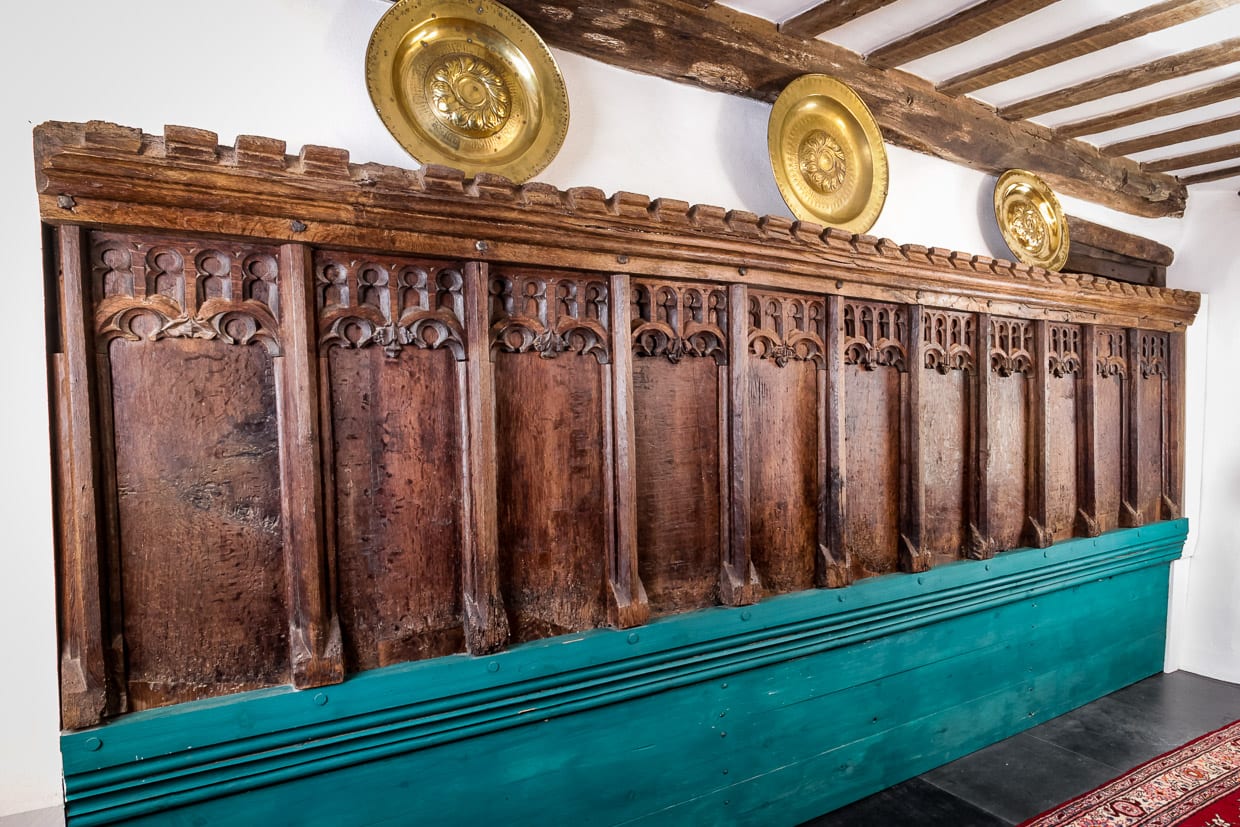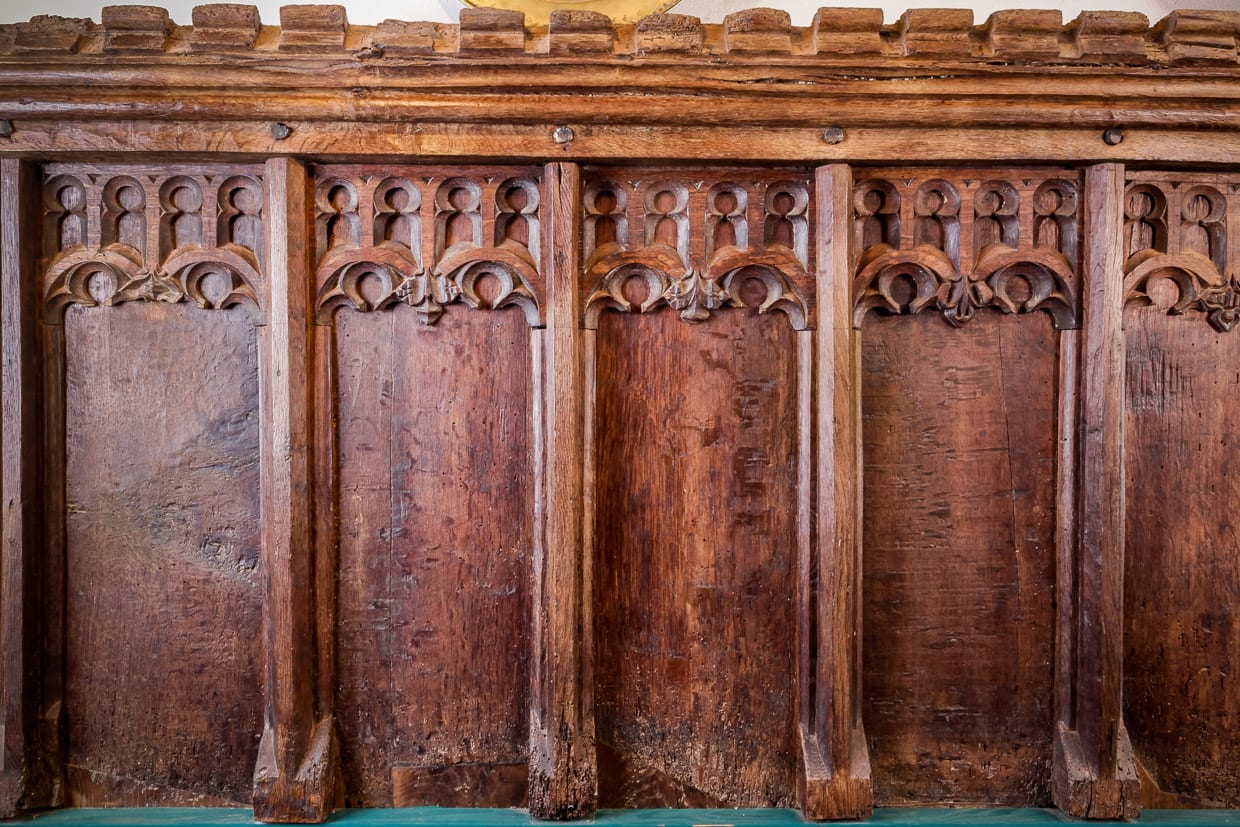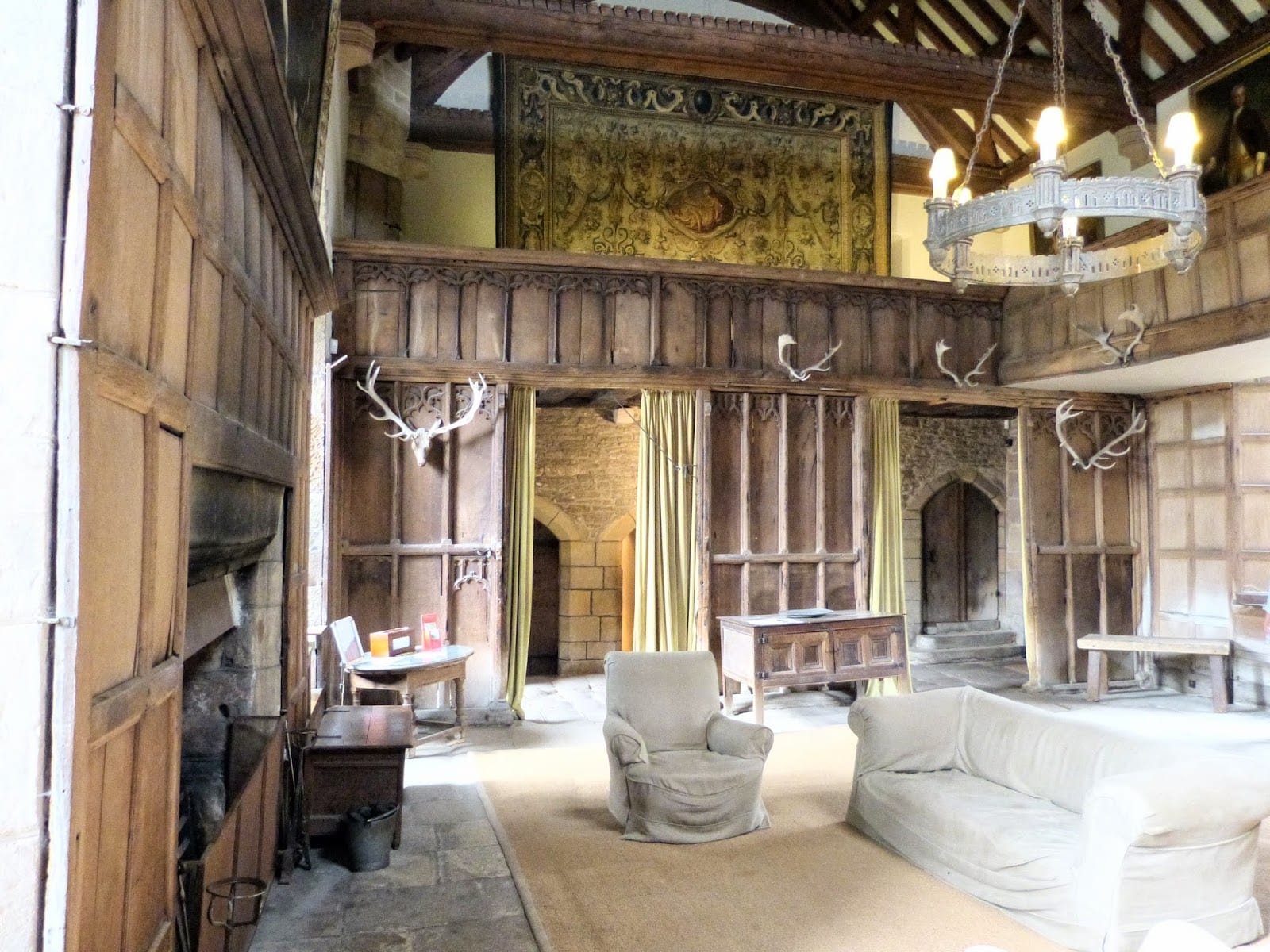Medieval carved oak Minstrels gallery
Circa 1400 - 1450
Boscarne Barton, Near Bodmin, Cornwall
W 13ft 1/2 × H 40 × D 7
Stock # Marh1625
SOLD
15th century carved oak upper section of a Minstrels gallery from Boscarne Barton, the homestead of the Flamank family who led the Cornish Rebellion against Henry VII in 1497. This gallery is very similar to the gallery in Haddon Hall in Derbyshire.
Thomas Flamank was the son and heir of Thomas Flamank of Boscarne. He married Elizabeth Trelawny, daughter of Sir John Trelawny, Knight, and first wife Blanche Powna. His daughter Joanna, became the wife of Peter Fauntleroy.
Thomas Flamank, was a Bodmin lawyer and hero, who together with spokesperson Michael An Gof led the Cornish Rebellion of 1497 in protest against taxes imposed on Cornwall by Henry VII. The uprising of Cornishmen marched successfully against the English all the way to London in 1497 but he was executed when the uprising was defeated. When faced with the sentence of death, Thomas Flamank is recorded in emulation of his legendary forbears, as having stated the immortal words "Speak the Truth and only then can you be free of your chains". Free speech is a central Cornish value.
According to William of Worcester, writing in the fifteenth century, Thomas Flamank was a direct descendant of the Earl of Cadoc (or Condor) who was a survivor of the Cornish royal line at the time of the Norman Conquest of England in 1066 and was appointed as the first Earl of Cornwall by William the Conqueror. According to the vernacular history of the Cornish and the Bodmin Manumissions the descendants of Cadoc lived on in the ancient areas of Pydar and Bodmin in Cornwall. Cadoc was himself a descendant of King Doniert (King Donyarth) whose ancient inscribed stone is still to be found in southeast Cornwall.
The Flamank family is of great antiquity at Bodmin, apparently with ancestral roots in Cornwall long before the Norman Conquest, and having held the manor of Nanstallon in uninterrupted succession from the fourteenth to the nineteenth century (1817). In early times the name appeared as Flandrensis, Flemang, Flammank, and in other forms such as Flammock and Flamoke. Boscarne is also spelled Boscaro and Buscarne, and is the modern village of Boscarn.
In 1497 Henry VII attempted to impose an illegal subsidy tax upon the people of Cornwall in order to dispatch an army to Scotland to punish James IV for supporting Perkin Warbeck. Michael Joseph An Gof, a blacksmith, was chosen by the people of St. Keverne to speak on behalf of the Cornish people to challenge the tax. When he and his followers reached Bodmin, they were joined by Thomas Flamank, whose father was one of the commissioners appointed to supervise the unwelcome tax collection. Flamank, a lawyer, argued that it stated clearly in the law derived from the Magna Carta, Saxon Law, English Law and the old laws of the Celtic clans,that such a local cost of defense was to be assumed by the local barons of the northern counties, to defend the Scottish border, and not by the king's subjects to the southwest, and that the tax was illegal. Especially in the unique case of the Cornish who were still a somewhat separate "nation" with a degree of sovereignty from England.
Flamank suggested that someone should speak to the king on behalf of the Cornish people. The Cornishmen were so enthusiastic, that thousands decided to join the march to London to present a petition to to the king himself, explaining their sound legal case. They resolved to set forth their grievances and then urge that the Archbishop Morton and Sir Reginald Bray be punished, and other advisers of the king, who were held responsible for this illegal action that could arouse discontent from the people against the crown's best interests. The men presumed that the king would hear them fairly.
As the Cornishmen proceeded with confidence into Devon, they were joined by other men sympathetic to their cause and their numbers grew as they marched to London. At Wells, James Tuchet, 7th Baron Audley, joined them and undertook the leadership. They marched to London by way of Salisbury and Winchester. London however was panic-stricken; and over time the rebels had grown disheartened by the lack of overall support shown to them in their long march, in spite of their increasing numbers. Giles Daubeny, 8th Baron Daubeny, was directed to take the field against the unarmed citizens, commanding forces numbering about 8,000 men. The very army which had been summoned for service against Scotland and paid for by the tax imposed on the Cornish people. That army would be asked to attack the men who bore the tax.
By 16 June 1497, the righteous Cornish petitioners of about 9,000 men had arrived at Blackheath to present their case to the king and expected to be welcomed with some dignity i keeping with their rights. Instead of preparing for battle they cleaned-up in preparation for an audience with the king. Daubeny was met by the king along with other nobles and gentry from nearby counties. The next morning, instead of a hearing before the king, a battle was enjoined at Deptford Strand. After a fierce skirmish, Daubeny took Deptford Bridge and he and his troops moved onto the Heath. Daubeny, outdistancing his men, was taken prisoner, but soon released. Fighting continued and the Cornishmen found themselves surrounded. Although they had fought bravely, they were a crowd of petitioners who had mistakenly trusted their king, and were without artillery or cavalry against a trained and well-equipped army. The Cornish were soon put to flight.
Audley was beheaded at Tower Hill. Flamank and An Gof were hanged, drawn and quartered at Tyburn (27 June), and their limbs exhibited in various parts of the city. Most of their followers were pardoned.


